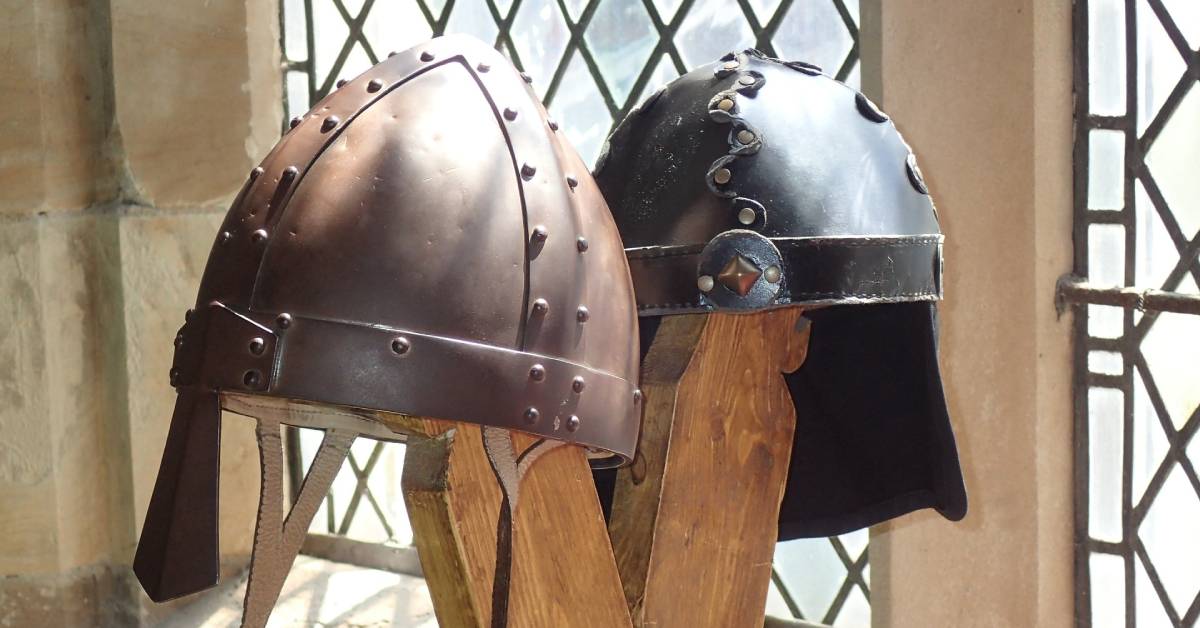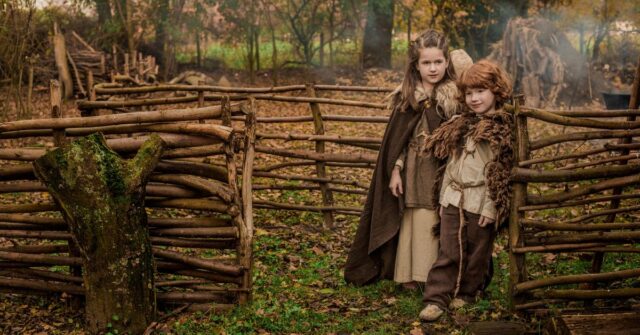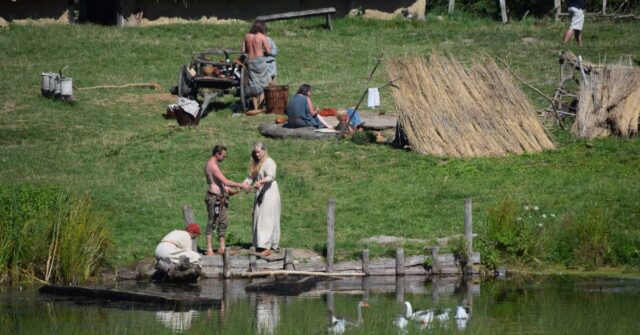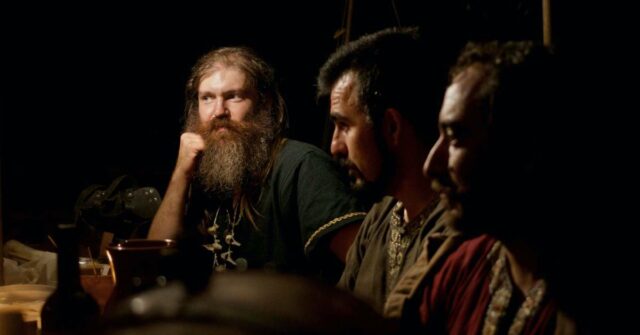In this article, we will explore the fascinating world of Viking clothing and personal adornment, delving into the styles, materials, and functions that characterized the attire and accessories of the Vikings during the Viking Age.
As we examine the various aspects of Viking clothing, we will gain insight into the historical context, cultural significance, and practical purposes of these garments and adornments.
Introduction to Viking Clothing and Personal Adornment
The Vikings were seafaring people from the late eighth to early eleventh century, known for their prowess in warfare, exploration, and trade.
Their clothing and personal adornment not only served practical purposes but also played a vital role in reflecting their social standing, cultural identity, and religious beliefs.
Through a comprehensive examination of the Viking Age attire and accessories, we can develop a more profound understanding of the Viking’s way of life, their values, and the nuances of their society.
Historical Context of Viking Clothing
The historical context of Viking clothing is crucial in understanding the evolution of their styles, materials, and functions.
This context encompasses the timeline of the Viking Age and the geographical distribution of Viking culture, both of which had a significant impact on the development of Viking attire and adornments.
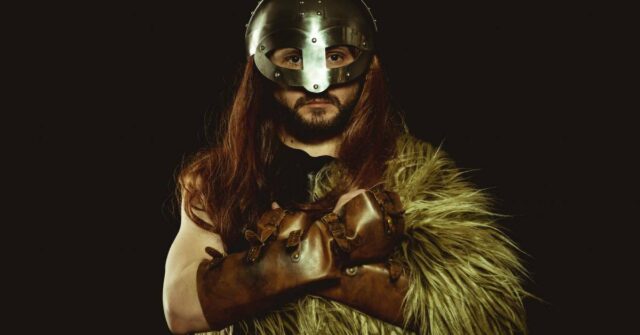
Viking Age Timeline
The Viking Age spanned from the late eighth century to the early eleventh century, with the earliest recorded Viking raid on the monastery of Lindisfarne in 793 AD often cited as the starting point.
This period was marked by significant changes in political, economic, and social structures in Europe, driven by the expansion of the Vikings beyond their Scandinavian homelands.
Understanding the timeline of the Viking Age is crucial to contextualize the evolution of their clothing styles and personal adornment practices throughout this period.
Geographical Distribution of Viking Culture
The Vikings originated from the Scandinavian countries of Denmark, Norway, and Sweden, but their influence spread far beyond these territories.
They established settlements and traded with various regions, including the British Isles, Iceland, Greenland, the Baltic countries, and even parts of Russia and the Middle East.
This geographical distribution significantly impacted the Vikings’ access to materials and the blending of local styles, which, in turn, influenced the evolution of their clothing and personal adornment practices.
Materials Used in Viking Clothing and Accessories
The materials used in Viking clothing and accessories varied greatly, influenced by factors such as availability, trade connections, and socio-economic status.
From common textiles like wool and linen to luxurious imports like silk, and from everyday materials like leather and bone to precious metals like silver and gold, each material had its unique characteristics and significance in Viking culture.
Textiles
The textiles used in Viking clothing played a significant role in the comfort, durability, and appearance of their garments.
From the most common materials like wool and linen to the more luxurious fabrics like silk, the choice of textiles reflected not only the wearer’s personal preference but also their social status, occupation, and the prevailing climate.
Wool
Wool was the most common textile used in Viking clothing, as sheep were abundant in Scandinavia and provided a versatile, durable, and warm material.
Different types of wool were used to create various garments, with coarser wool typically used for outer layers and finer wool for inner garments.
The wool was spun into yarn and woven into various fabric patterns, including twill, herringbone, and diamond weaves.
Linen
Linen was another popular textile used in Viking clothing, made from the fibres of the flax plant. Linen garments were generally lighter and more comfortable than wool, making them suitable for warm-weather clothing or as inner layers.
Linen was also used for head coverings and for wrapping infants, due to its softness and breathability.
Silk
Silk was a luxury material imported from the East, primarily through trade with the Byzantine Empire and the Islamic world. Due to its rarity and high cost, silk was typically reserved for the wealthy and used as a status symbol.
Silk garments and accessories were often adorned with intricate embroidery and embellishments, further highlighting their prestige.
Leather and Fur
Leather and fur were also used in Viking clothing, especially for footwear, belts, and gloves. Leather was sourced from various animals, including cattle, sheep, goats, and deer, while fur was obtained from animals like foxes, bears, and beavers.
These materials provided warmth, durability, and water resistance, making them practical choices for the harsh Scandinavian climate and various occupations.
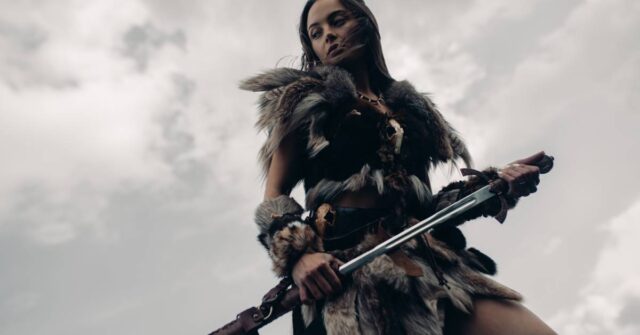
Metals
Metals held a place of prominence in Viking personal adornment and were integral to the construction of many clothing accessories.
Iron, silver, and gold, each had their unique importance in the Viking era. The choice of metal used often signified the wearer’s status, wealth, and even their profession, making metals a fascinating aspect of Viking clothing culture.
Iron
Iron played a significant role in Viking personal adornment and accessories. Iron was used to create brooches, belt buckles, and other clothing fasteners, as well as tools such as knives and needles.
Iron was also used in the construction of weapons and armor, which were integral to the Viking warrior’s attire.
Silver
Silver was a precious metal, highly valued by the Vikings and used extensively in jewellery and personal adornment. Silver necklaces, bracelets, rings, and pendants were common, often featuring intricate designs and craftsmanship.
Silver was also used as currency in the form of silver bars and coins, sometimes worn as a symbol of wealth and status.
Gold
Gold was another luxury metal used in Viking jewellery and personal adornment. While less common than silver due to its rarity and cost, gold items were highly sought after and reserved for the elite.
Gold jewellery often featured detailed filigree work, granulation, and gemstone inlays, demonstrating the skills of Viking goldsmiths.
Beads and Glass
Beads were a popular form of personal adornment among the Vikings, made from materials such as glass, amber, and semi-precious stones.
Glass beads, in particular, were produced in a variety of colours and shapes and were often traded or gifted as a sign of friendship and alliance. Beads were typically strung together to create necklaces or used to adorn clothing and other accessories.
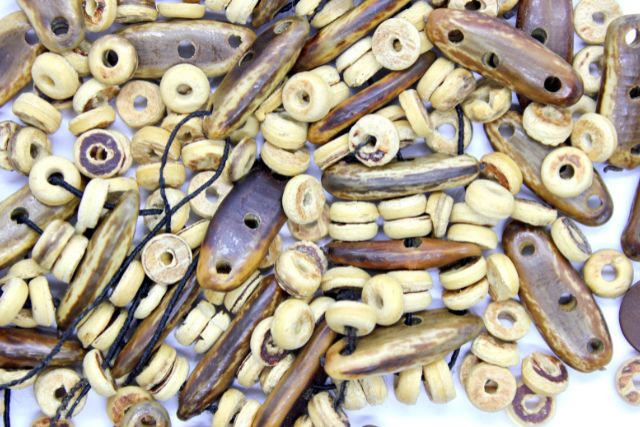
Bone and Antler
Bone and antler were common materials used in the production of Viking clothing and personal adornment items, as they were readily available and easily worked.
Items made from bone and antlers included buttons, pins, combs, needle cases, and even decorative elements for jewellery.
Viking Clothing Styles and Garments
Viking clothing styles and garments were designed to meet the demands of their lifestyle, climate, and social structure.
From men’s tunics and trousers to women’s overdresses and apron dresses, and from children’s clothing to headwear and footwear, Viking attire was characterized by its practicality, versatility, and symbolic value.
Men’s Clothing
Viking men’s clothing was designed to be practical and versatile, accommodating the physical demands of their occupations and the variable climate.
From tunics and trousers to cloaks and headwear, each garment served a specific purpose while also offering opportunities for individual expression and displays of status and wealth.
Tunics
Viking men typically wore a knee-length tunic as their main garment, made from wool or linen. The tunic had a round or V-shaped neckline and was either pulled over the head or fastened with brooches or pins at the front.
Long sleeves provided warmth, while slits at the sides allowed for ease of movement. Tunics were often belted at the waist to create a more fitted silhouette and to hold tools and accessories.
Trousers
Men wore trousers made of wool or linen, which extended to the ankle or just below the knee. Trousers were held up by a belt or a drawstring and were sometimes worn with leg wraps or stockings for added warmth and protection.
Cloaks
Cloaks were an essential outerwear item for Viking men, providing protection from the elements and additional warmth. Cloaks were typically made of wool and were fastened at the shoulder with a brooch or pin.
Some cloaks were lined with fur for extra insulation, particularly in colder climates.
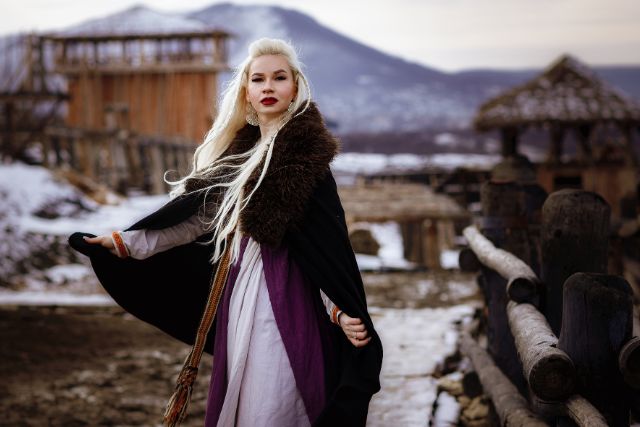
Headwear
Viking men wore various types of headwear, including simple caps made from wool or linen, and fur-lined hats for colder weather.
Contrary to popular belief, Viking helmets did not have horns; this is a modern myth perpetuated by nineteenth-century romanticized depictions of Vikings.
Helmets were worn primarily for warfare and were typically made of iron, featuring a rounded or conical shape and sometimes a nose guard for added protection.
Footwear
Footwear for Viking men consisted of leather shoes or boots, with styles varying based on function and climate.
Shoes were often constructed using the turn shoe method, where the leather upper was sewn together inside out and then turned right side out for a seamless appearance.
Boots provided more coverage and warmth, particularly in wet or cold conditions. Both shoes and boots were fastened with leather laces or toggles.
Women’s Clothing
Women’s clothing in the Viking Age was characterized by its layered structure, modesty, and decorative elements. The ensemble typically included an undergarment, an overdress, and an apron dress, each serving a functional and symbolic purpose.
Women’s attire also offered opportunities for personal adornment and the expression of individual style, social status, and cultural identity.
Undergarments
Viking women wore a simple linen undergarment, similar to a modern-day slip, which served as a base layer for their clothing. This undergarment, also known as a shift, had long sleeves and extended to the ankle, providing comfort and modesty.
Overdresses
Over the undergarment, Viking women wore an overdress, typically made of wool. This garment was either sleeveless or had short sleeves and was usually ankle-length. The overdress was often belted at the waist and featured side slits for ease of movement.
Apron Dresses
An apron dress, or hangerock, was a unique and distinctive garment worn by Viking women.
This sleeveless, A-line dress was worn over the overdress and fastened at the shoulders with brooches or pins, often adorned with beads or other decorative elements.
The apron dress provided additional warmth and modesty and was an opportunity for women to display their wealth and status through their choice of fabrics, colours, and embellishments.
Headwear
Viking women typically covered their hair with headwear, such as a linen cap, a headscarf, or a more elaborate headdress.
Head coverings served practical purposes, such as keeping hair clean and protected, but also had social and cultural significance, with different styles indicating marital status or religious affiliation.
Footwear
Like men, Viking women wore leather shoes or boots, with styles varying depending on the climate and intended use. Women’s shoes were generally similar to men’s in construction, with some variations in decoration or fastening methods.
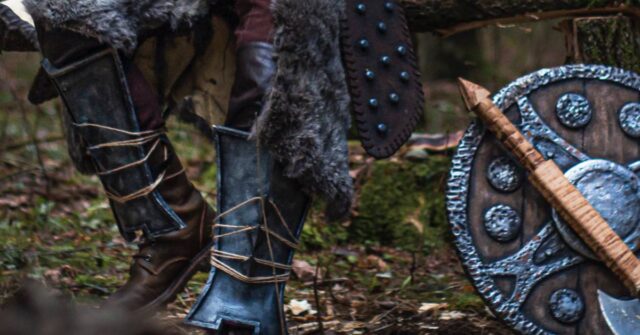
Children’s Clothing
Children’s clothing in the Viking Age mirrored that of adults, with similar styles and materials used for both boys and girls.
As children grew, their garments could be easily adjusted or repurposed, making them a practical and economical choice for Viking families.
Function and Symbolism of Viking Clothing
The function and symbolism of Viking clothing went hand in hand, serving practical needs while also reflecting the wearer’s social status, cultural identity, and religious beliefs.
From providing protection from the elements and accommodating occupational needs to signalling wealth and status and expressing regional and cultural identity, Viking attire and adornments held a wealth of meaning beyond their immediate utility.
Practical Functions
Viking clothing and personal adornment served several practical functions that were integral to their daily life and survival.
The demanding climate and the physical nature of their occupations required clothing and accessories that provided protection, comfort, and ease of movement.
From protection against the elements to considerations related to their occupations, each piece of attire had a specific practical purpose.
Protection from the Elements
Viking clothing served the essential function of protecting its wearer from the harsh and variable climate of Scandinavia and other regions where the Vikings settled.
Garments made from wool, linen, leather, and fur provided insulation and protection from the wind, rain, and cold.
Occupational Considerations
The clothing and accessories worn by the Vikings also reflected their occupations and daily activities.
Warriors, farmers, traders, and craftsmen each had specific clothing and adornment requirements to meet the demands of their work, such as durable and protective footwear, easily adjustable garments, and practical belts and pouches for carrying tools and supplies.
Social and Cultural Significance
The social and cultural significance of Viking clothing extended beyond its practical functions, serving as a powerful medium of self-expression and social communication.
Clothing and personal adornment offered insights into a person’s wealth, status, regional identity, and religious beliefs, acting as visual markers of social and cultural distinctions.
From the status symbolized by precious metals to the cultural identity conveyed by regional styles, Viking attire and adornments were rich with symbolic meaning.
Status and Wealth
Viking clothing and personal adornment often served as an indicator of social status and wealth. High-quality materials, elaborate designs, and intricate craftsmanship were reserved for the elite, who used their attire to display their power and prestige.
Silk, gold, and silver items, as well as imported fabrics and adornments, were particularly indicative of wealth and high social standing.
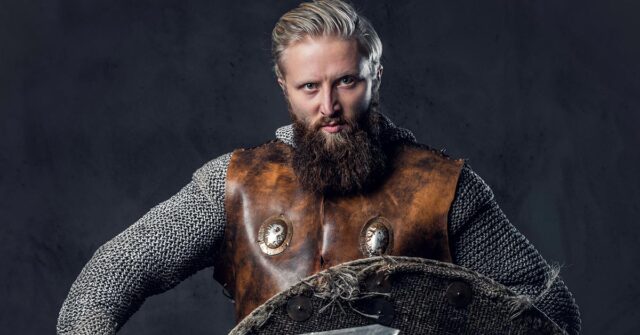
Regional and Cultural Identity
The Vikings’ clothing and accessories also reflected their regional and cultural identity. Different regions and communities had distinct styles, patterns, and embellishments that set them apart from others.
These unique elements showcased their heritage and provided a sense of belonging and unity within their communities.
Religious Beliefs
Religious beliefs played a significant role in the Vikings’ choice of clothing and personal adornment. Amulets, talismans, and other symbolic items were worn to honour the gods, protect against evil spirits, and ensure good fortune.
Common religious symbols in Viking jewellery and accessories included Thor’s hammer, Odin’s ravens, and the Valknut, representing the afterlife and the warrior’s journey to Valhalla.
Conclusion
Viking clothing and personal adornment were far more than just practical necessities; they were a rich and complex reflection of the Vikings’ social structure, cultural identity, and religious beliefs.
Through a comprehensive examination of the materials, styles, and functions of Viking attire and accessories, we gain a deeper understanding of the Viking Age and the people who shaped its history.
By studying the nuances of Viking clothing, we can better appreciate the craftsmanship, creativity, and adaptability of this fascinating and influential culture.

